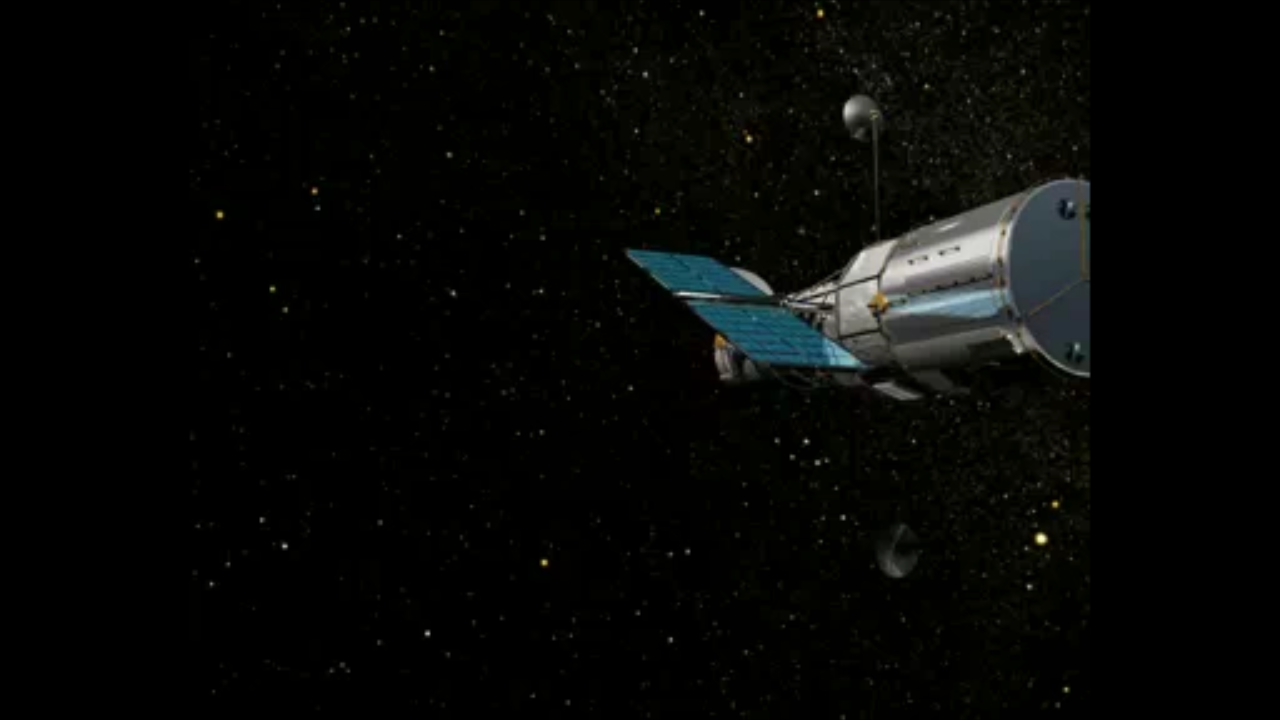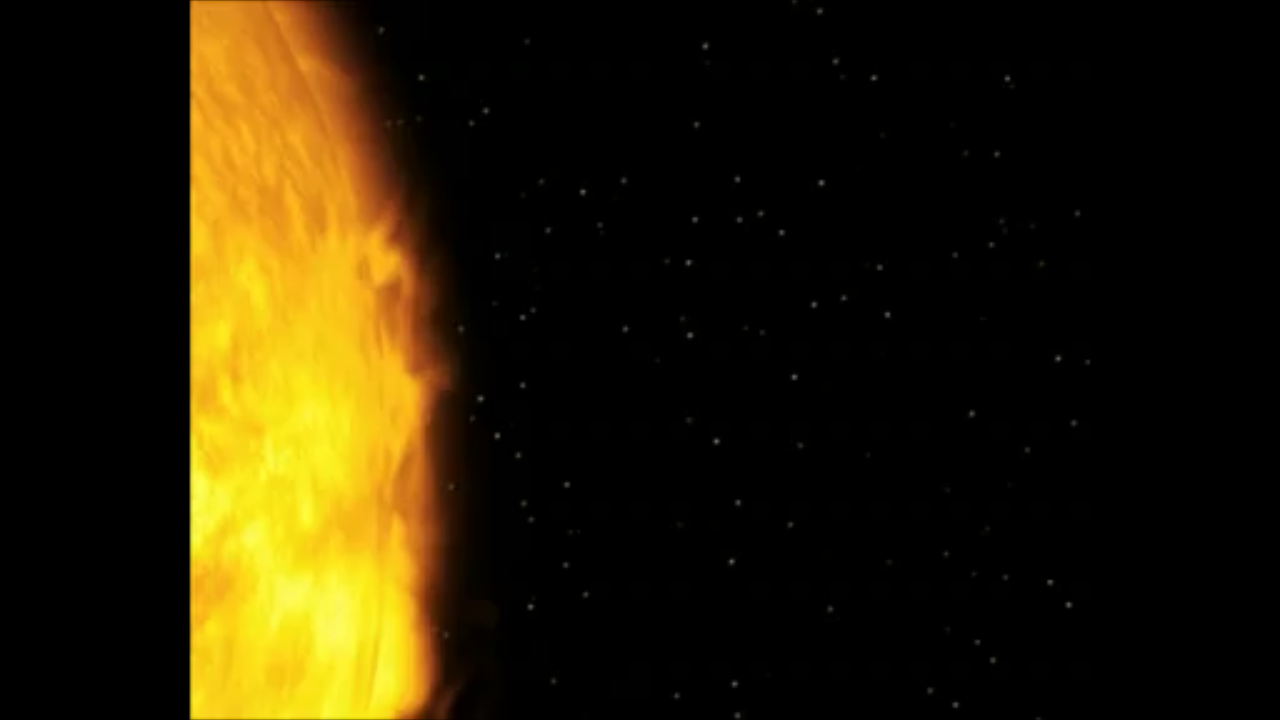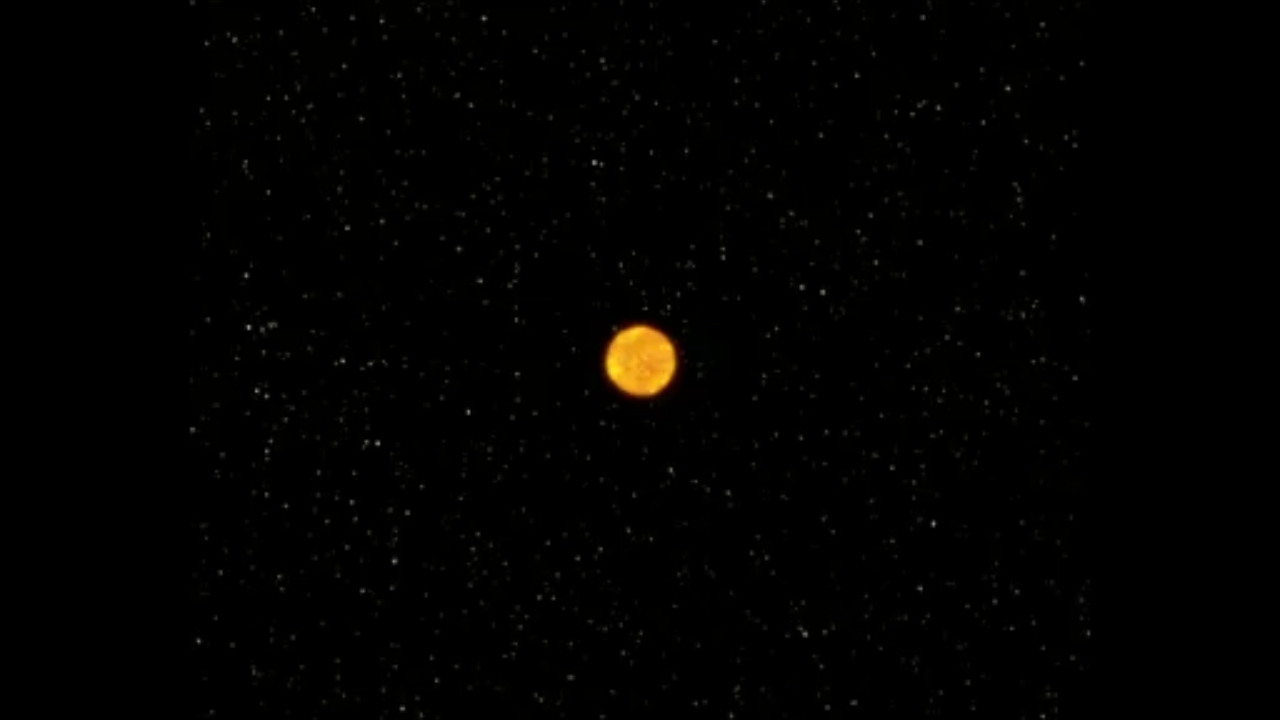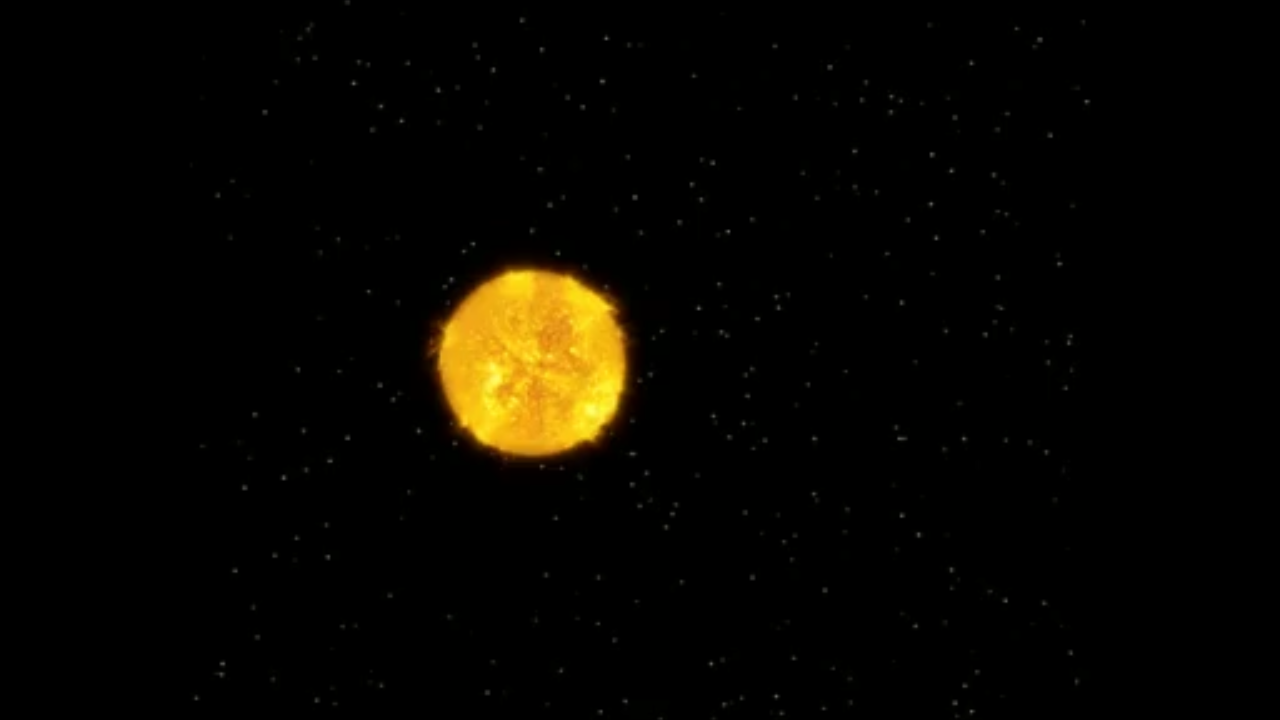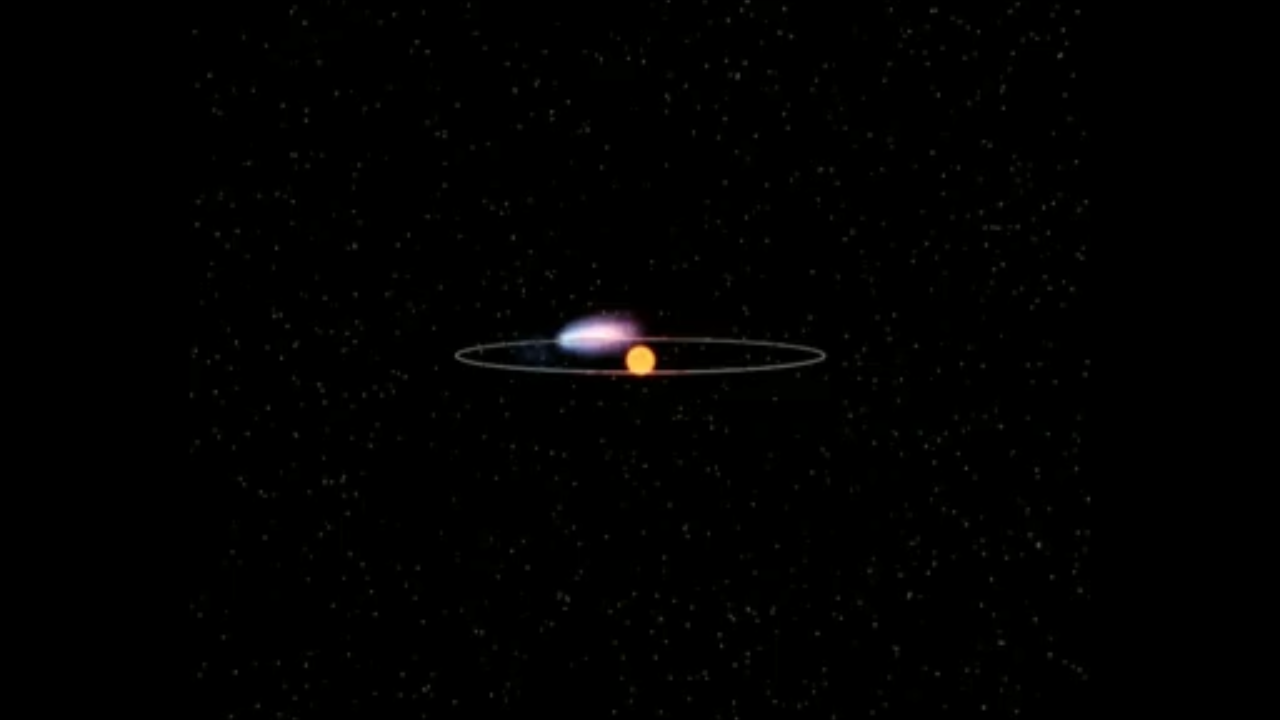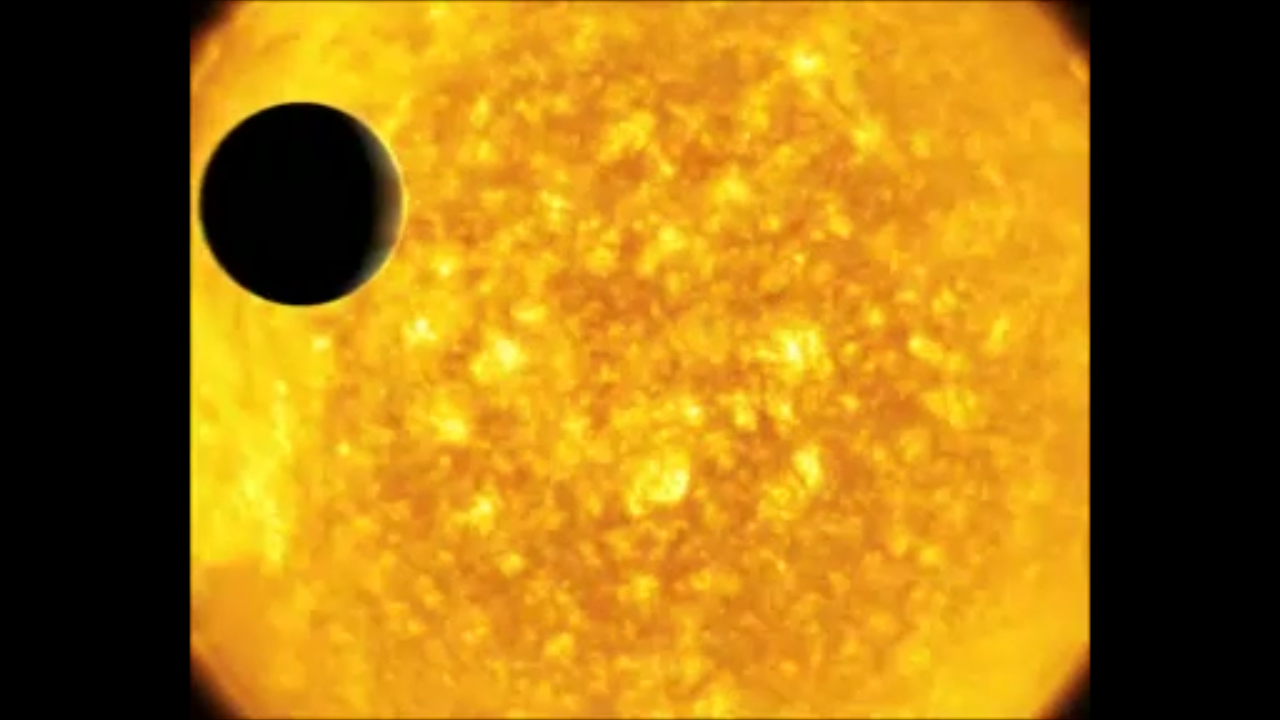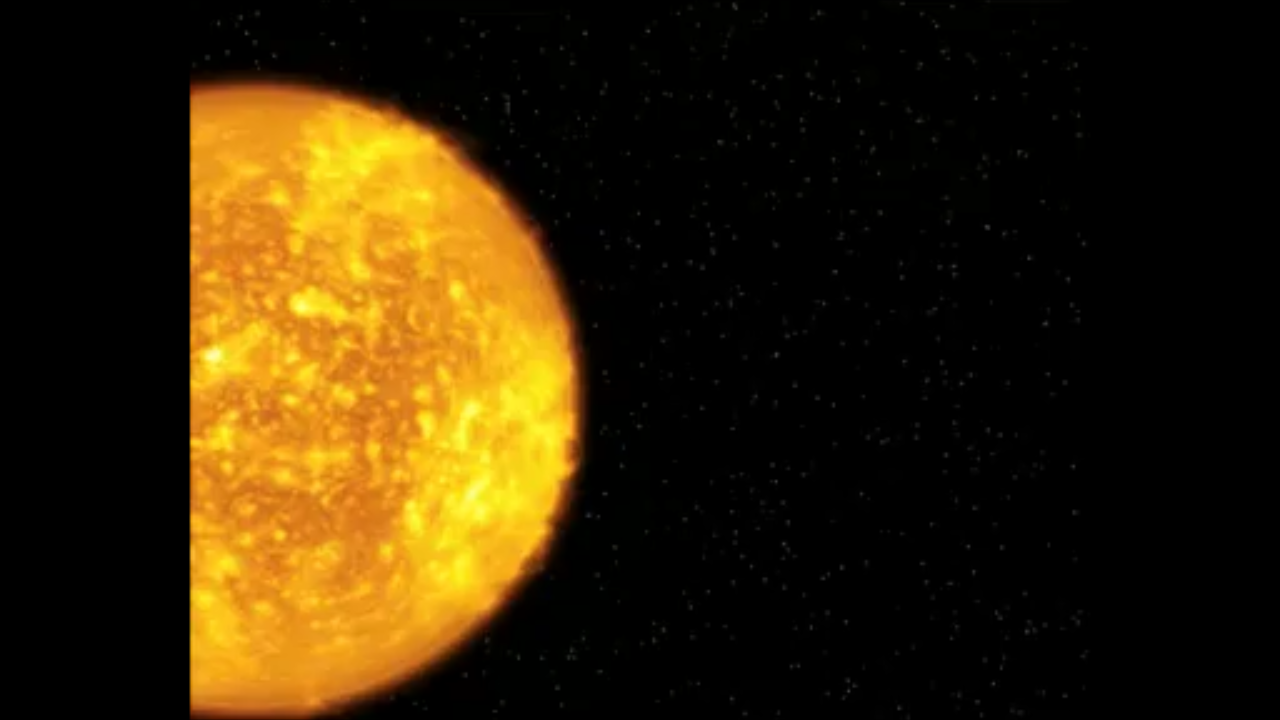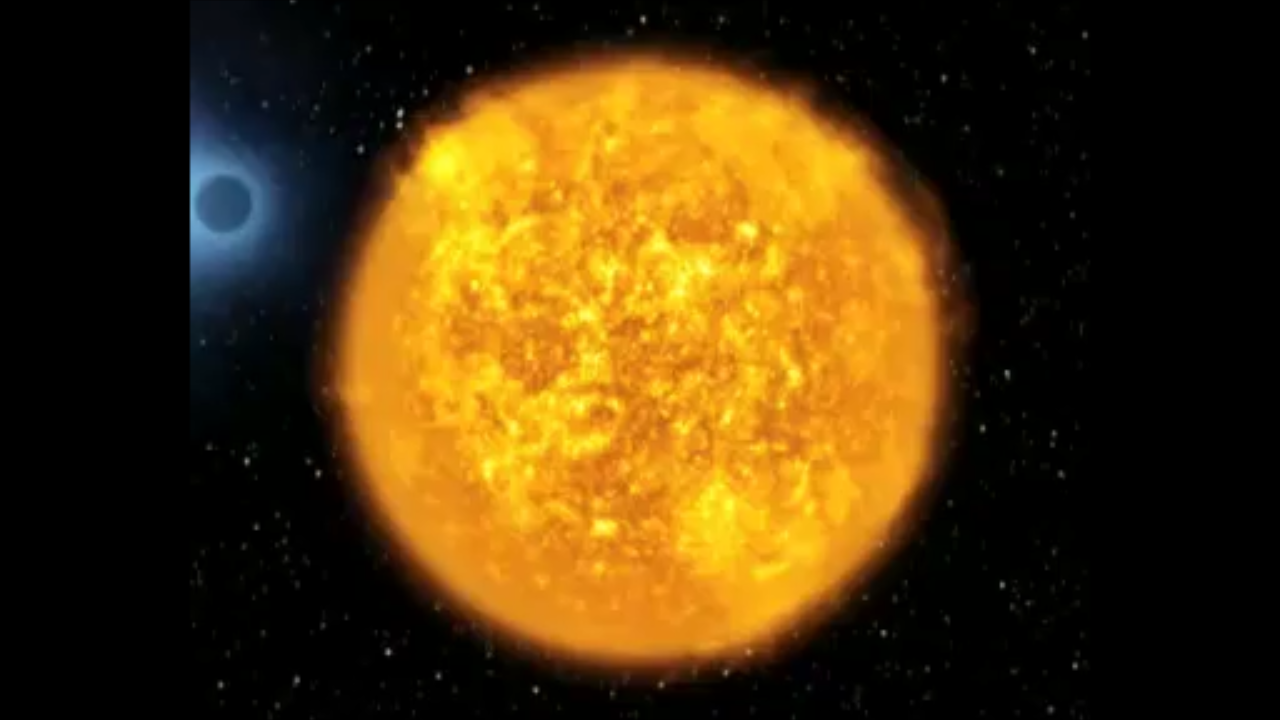1 min read
Video News Release: European Astronomers Observe First Evaporating Planet
STScI PR03-08 Video News Release
European Astronomers Observe First Evaporating Planet
[Earth animations, 0:00-0:15] The Earth - the planet on which we live. It orbits around our star, the Sun, at a safe distance of 150 million kilometres. But not all planets are so fortunate...
[Dramatic close-up, extrasolar planet orbiting star, 0:15-0:45] In the latest issue of the magazine NATURE astronomers report the first observation of an evaporating extrasolar planet, its atmosphere boiling off into space. Much of the planet may eventually disappear, leaving only a dense core. This observation sheds new light on the fate of gas giant planets that spiral in close to their parent stars, drawn to them like moths to a flame.
[Hubble Space Telescope animations, 0:45-1:07] A team of astronomers used the Earth-orbiting NASA/ESA Hubble Space Telescope to observe the planet as it crossed the face of its parent star. The observations were made in ultraviolet light. Hubble's position above the atmosphere makes it the only telescope that can perform this type of observations.
[Hubble Space Telescope observing sky, zoom on star, Extrasolar transiting star in 1999, 1:07-1:28] The parent star, HD 209458 is similar to our Sun and lies 150 light-years from Earth in the constellation of Pegasus. In 1999 this star suddenly entered the astronomical "Hall of Fame" when the extrasolar planet was seen passing in front of the star and partly eclipsing it.
[Extrasolar planet orbiting parent star, overview and close-up 1:28-1:55] The scorched planet orbits at a distance of only 7 million kilometres from its yellow Sunlike star. Its atmosphere is heated so much that hydrogen escapes the gravitational pull of the planet and fans out in a giant comet-like tail. Although the planet is too close to the star for Hubble to photograph, it blocks light from a small part of the star during the transits, as in a partial eclipse, thereby dimming it slightly.
[Zooming on the 100 orbits of all known extrasolar planets showing the 'empty hole' near the star, 1:56-2:22] This new discovery may help to explain why extrasolar planets seem to pile-up in orbits a few million kilometres from their parent stars, but are not found much closer than HD 209458b's distance of 7 million kilometres. The planets orbiting closer may simply evaporate away so quickly, that they are unlikely to be discovered.
Shotlist
TIMECODE DESCRIPTION A-ROLL 10:00:40 Sunset over Earth 10:00:47 Earth rotating, Brazil covered in clouds 10:00:58 Dramatic close-up, extrasolar planet passing by in its deadly 7 million kilometer orbit over the hot parent star 10:01:11 Zooming on parent star, scorching hot gas streams up 10:01:22 Hubble Space Telescope (HST) animations 10:01:37 HST observes the constellation Pegasus, 2.5 degree field from the ground-based Digitized Sky Survey 2 zooms up, centred on parent star HD 209458. 10:01:50 Crossfade to animation of parent star, zooming in 10:01:58 Extrasolar transit from 1999 10:02:06 Planet orbiting star, comet-like gas tail 10:02:17 Following planet behind star 10:02:27 Planet + tail passing in front of star 10:02:35 Zooming on orbits of 100 known extrasolar planets, showing the central 7 million kilometre 'zone of avoidance'. 10:03:02 END A-ROLL
B-ROLL 10:03:12 A-roll animations: · Dramatic extrasolar planet closeup · Zooming on parent star · HST observing, zoom on parent star HD 209458 · Crossfade to animation of parent star · Extrasolar transit from 1999 · Planet w. tail orbiting star · Following planet behind star · Planet + tail passing in front of star · Zooming on orbits of 100 known extrasolar planets 10:05:09 HST receives light from space, instruments and mirror inside of HST visible 10:05:31 HST transmits observations to the ground 10:05:51 Miscellaneous HST animations 10:08:41 Miscellaneous Earth animation 10:09:35 END B-ROLL
- Release DateMarch 12, 2003
- Science ReleaseToo Close for Comfort: Hubble Discovers an Evaporating Planet
- Credit
Related Images & Videos

Artist's Illustration – Evaporating Planet HD 209458b
Astronomers using NASA's Hubble Space Telescope have observed for the first time the atmosphere of a planet beyond our solar system evaporating into space. This artist's illustration shows a dramatic close-up of the scorched extrasolar planet HD 209458b in its orbit only 4...
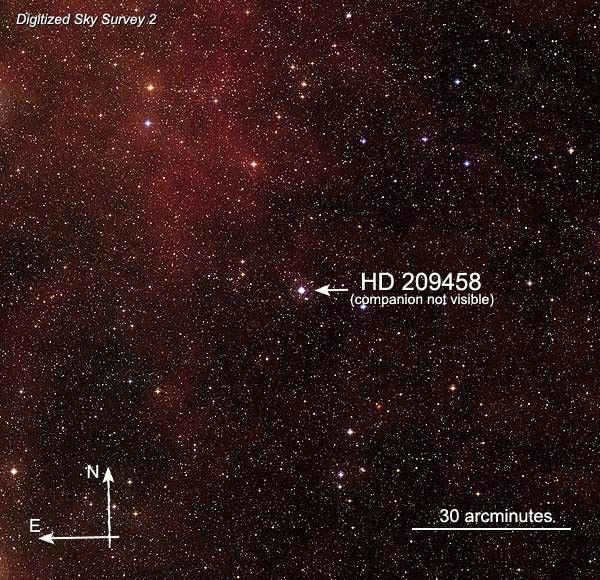
Location of Star HD 209458 (Annotated)
The parent star of transiting planet HD 209458b is called HD 209458. It is similar to our Sun and lies 150 light-years from Earth. The star is visible with binoculars as a seventh magnitude star in the constellation Pegasus. This is a a 1.9 x 1.9 degree three-color composite...

Location of Star HD 209458
The parent star of transiting planet HD 209458b is called HD 209458. It is similar to our Sun and lies 150 light-years from Earth. The star is visible with binoculars as a seventh magnitude star in the constellation Pegasus. This is a a 1.9 x 1.9 degree three-color composite...
Share
Details
Claire Andreoli
NASA’s Goddard Space Flight Center
Greenbelt, Maryland
claire.andreoli@nasa.gov



























